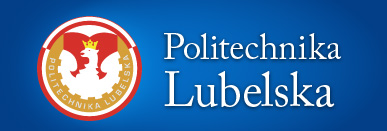Stocktaking methods of facilities in a state of ruin
© 2016 Budownictwo i Architektura. Publikacja na licencji Creative Commons Attribution-NonCommercial-ShareAlike 4.0 (CC BY-NC-SA 4.0)
Cytowanie: Budownictwo i Architektura, 17(4) (2018) 005-015, ISSN 1899-0665, DOI: 10.24358/Bud-Arch_18_174_01
| Historia: | |
|---|---|
| Opublikowano: | 28-02-2019 |
Streszczenie:
–
Słowa kluczowe:
–
Stocktaking methods of facilities in a state of ruin
Abstract:
The stocktaking is the basic form of presenting and protecting the object of the historic ruin. It also allows to monitor the behavior state and the degradation progress of an object. Objects in ruin are very specifi c because they usually do not have elements typical for an existing building. This means that in the case of ruins, methods of stocktaking taken in the same way as in the case of traditional facilities will be insuffi cient. Elements of objects in ruin often have complicated and diverse geometry, diffi cult and not completely secure access to all elements. The article presents methods that can be helpful in the stocktaking of such objects. Each method describes the necessary equipment and instruments, the method of taking measurements, accuracy, advantages, and limitations. The paper also presents examples of application for selected methods
Keywords:
stocktaking, ruin, monument, photography, 3D scanning, photogrammetry
Literatura / References:
[1] Bar E., Fałdrowicz J. Dokumentowanie zabytków architektury metodami fotogrametrycz-nymi i skaningu laserowego, Acta Scientifi ca Academiae Ostroviensis 34 (2010) 5–14,[2] Brusaporci S., The representation of architectural heritage in the digital age, encyclopedia of information science and technology, Information Resources Management, USA, 2005.
[3] Brykowska M. Metody pomiarów i badań zabytków architektury, Ofi cyna Wydawnicza Politechniki Warszawskiej, 2003.
[4] Centofanti M., Brusaporci S. Interpretative 3D digital models in architectural surveying of historical buildings, Computational modelling of objects represented in images. CRC Press, London, 2012.
[5] Gołembnik A. Rola nowych technik dokumentacyjno-pomiarowych w interdyscyplinarnych działaniach badawczo-konserwatorskich, Wiadomości Konserwatorskie 40 (2014) 83–93.
[6] Gołka J., Haliński J. Fotogrametria cyfrowa w architekturze – nowe możliwości inwentaryzacji i archiwizacji obiektów, Archiwum Fotogrametrii, Kartografi i i Teledetekcji 10 (2000) 38–1: 38–7.
[7] Jachimski J. Fotogrametryczna inwentaryzacja obiektów zabytkowych, Archiwum Fotogrametrii, Kartografi i i Teledetekcji 7 (1997) 53–60.
[8] Klimkowska H., Wróbel A. Uwagi o wykorzystaniu tachimetrów bezlustrowych w inwenaryzacji architektonicznej, Archiwum Fotogrametrii, Kartografi i i Teledetekcji 16 (2016).
[9] Kwoczyńska B. Opracowanie obiektów architektonicznych z wykorzystaniem metod stosowanych w fotogrametrii cyfrowej, Infrastruktura i ekologia terenów wiejskich, Polska Akademia Nauk, Odział w Krakowie, 3 (2010) 65–74.
[10] Parat M., Schaaf U. Inwentaryzacja pomiarowo-rysunkowa zabytków architektury drewnianej w procesie konserwatorskim – problemy i propozycja standaryzacji, Budownictwo i Architektura 14(4) (2015) 99–110.
[11] Prarat M. Wykorzystanie tachimetrii i fotogrametrii w dokumentacji zabytków architektury na przykładzie inwentaryzacji pomiarowo-rysunkowej wybranych kamienic toruńskich, Acta Universitatis Nicolai Copernici 46 (2015) 509–531.
[12] Szmygin B. Wprowadzenie, Trwała ruina II. Problemy utrzymania i adaptacji. Ochrona, konserwacja i adaptacja zabytkowych murów, Lublin–Warszawa, 2010, s. 5–6.
[13] Tajchman J. Standardy w zakresie projektowania, realizacji i nadzorów prac konserwatorskich dotyczących zabytków architektury i budownictwa, Narodowy Instytut Dziedzictwa, Warszawa, 2014.
[14] Trizio I. GIS-technologies and Cultural Heritage: stocktaking, documentation and management. In Rethinking Cultural Heritage, Experiences from Europe and Asia, Dresden: Tech-nischeUniversität Dresden, 2007, s. 75–91.
[15] Uścinowicz J. Standards of conservation documentation of wooden architecture facilities as a basis for monitoring and management, Documentation and the monitoring in managing timber objects in Krzysztof Kluk Museum of Agriculture in Ciechanowiec and the Ryfylke Museum, Krzysztof Kluk Museum of Agriculture in Ciechanowiec, 2015, s. 43–67.
[16] Wytyczne Techniczne G-3.4, Inwentaryzacja zespołów urbanistycznych, zespołów zieleni i obiektów architektury, GUGiK, Warszawa, 1981.
[17] PN-70/B-02365 – Powierzchnie budynków – Podział, określenia i zasady obmiaru.
[18] PN-ISO9836:1997 – Właściwości użytkowe w budownictwie – Określenie i obliczanie wskaźników powierzchniowych i kubaturowych.

